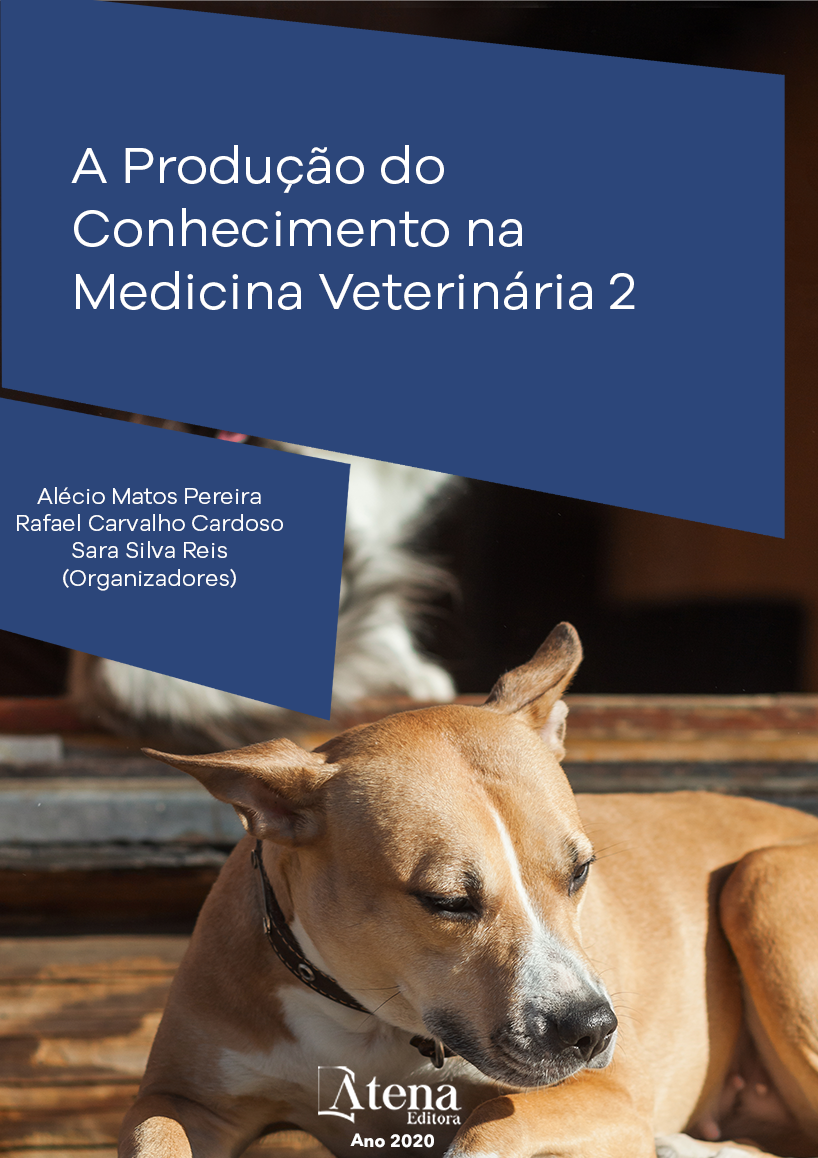
ESTUDO GONIOMÉTRICO DE CÃES SEM RAÇA DEFINIDA DE PEQUENO PORTE
O estudo goniométrico é de
grande importância na avaliação de doenças
articulares em cães e em reabilitação pósoperatória.
A mensuração é feita com o auxílio
de um goniômetro universal. Este trabalho
objetivou a comparação dos ângulos articulares
mensurados in vivo e em imagens radiográficas
de cães sem raça definida de pequeno porte,
utilizando o goniômetro universal, para
padronizar os valores desses ângulos. Foram
atendidos de forma voluntária seis cães
hígidos, machos e fêmeas, sem raça definida
(SRD), com peso médio de 7,7± 2,4kg, com
idade média de 43± 12 meses e sem histórico
de doenças ou lesões articulares, no Hospital
Veterinário da Universidade Estadual de Santa
Cruz - UESC. Dentre as médias e desviospadrões
obtidos para a flexão do ombro foram
de 55 ± 11º, já no quadril foram de 54 ± 15°. Já
as medias de extensão foram de 145 ± 23º para
o ombro e 139 ± 18 para o quadril. Após análise
dos dados obtidos observou-se diferenças entre
os ângulos mensurados em todos os animais
comparando as medidas in vivo e em suas
radiografias. A padronização não foi possível
pela baixa amostragem e pela diferença de
conformação corporal dos animais sem raça
definida o que leva às variações dos ângulos
articulares encontrados. Conclui-se que há uma
variação entre os valores in vivo e das imagens
radiográficas e também que animais sem raça
definida possuem conformação corpórea muito
variável dificultando a padronização.
ESTUDO GONIOMÉTRICO DE CÃES SEM RAÇA DEFINIDA DE PEQUENO PORTE
-
DOI: 10.22533/at.ed.6082023015
-
Palavras-chave: ângulos articulares, exame ortopédico, cirurgia veterinária.
-
Keywords: joint angles, orthopedic examination, veterinary surgery
-
Abstract:
Goniometric study is of great
importance in the orthopedic evaluation of joint
diseases in dogs. Measurement is done with
A Produção do Conhecimento na Medicina Veterinária 2 Capítulo 5 42
the help of a universal goniometer. The objective of this study was to compare the
measurement of articular angles in vivo and in radiographic images of non - breed
small dogs using the universal goniometer, and to try to standardize the values of
these measurements. Six healthy male and female dogs were evaluated on a voluntary
basis, with a mean weight of 7.7 ± 2.4 kg, mean age 43 ± 12 months and without
joint damage, at the Veterinary Hospital of the State University of Santa Cruz - UESC.
Among the means and standard deviations obtained for shoulder flexion were 55 ±
11º, and in the hip were 54 ± 15º. On the other hand, the means of extension were 145
± 23º for the shoulder and 139 ± 18 for the hip. After analyzing the obtained data, we
observed differences between the angles measured in all animals compared to their
radiographs, in accordance with what is reported in the literature. Standardization was
not possible due to the low sampling and the difference in body shape of the animals
with no defined breed, which leads to the variations of the articular angles found. It is
concluded that there is a variation between the in vivo and radiographic values and
also that animals without a defined breed have a very variable body shape, making
standardization difficult.
-
Número de páginas: 15
- Marina Cartagena Machado
- Anderson Vieira de Jesus
- Luci Ana Fernandes Martins
- Elisângela Barboza da silva


